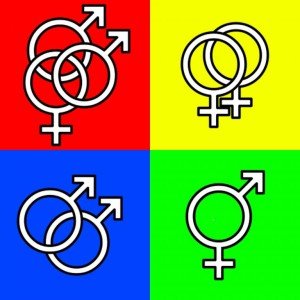The decision of the honorable Supreme Court of India, dated December 11, 2013 has once again set various communities of the country in motion. Be it the LGBT communities, Religious leaders, Social workers or even the public at large, everyone is all set to express their opinions regarding the correctness of the decision or the defeat of the rights of citizens alike. Most of the comments, however, are raised for or against the Judges G. S. Singhvi and S. J. Mukhopadhaya .
However, before coming to any conclusion we need to look into the ratio decendi of the Court and also how far it is in the hands of the Judiciary to involve in the matter. Given below are the extracts from the judgment of Supreme Court, delivered in this regard.
Para 42 — Those who indulge in carnal intercourse in the ordinary course and those who indulge in carnal intercourse against the order of nature constitute different classes and the people falling in the later category cannot claim that Section 377 suffers from the vice of arbitrariness and irrational classification.
The High Court was not right in declaring Section 377 IPC ultra vires Articles 14 and 15 of the Constitution because Section 377 merely defines the particular offense and prescribes punishment for the same which can be awarded if in the trial conducted in accordance with the provisions of the Code of Criminal Procedure and other statutes of the same family the person is found guilty.
Para 43 –– The SC judges observed that the Division Bench of the High Court while reading down Section 377 of the India Penal Court overlooked that a miniscule fraction of the country’s population constitute lesbians, gays, bisexuals or transgenders and in last more than 150 years less than 200 persons have been prosecuted for committing offence under Section 377 of the IPC. This, the SC said, cannot be made sound basis for declaring that section ultra vires the provisions of Articles 14, 15 and 21 of the Constitution.
Para 51 — The Naz Foundation attacked Section 377 of the IPC on the ground that the same has been used to perpetrate harassment, blackmail and torture on certain persons, especially those belonging to the LGBT community. In our opinion, this treatment is neither mandated by the section nor condoned by it. The mere fact that the section is misused by police authorities and others is not a reflection of the vires of the section. It might be a relevant factor for the Legislature to consider while judging the desirability of amending Section 377 of the IPC.
The Court further went on to say that the Legislature must consider amending the Article as suited to the present scenario.
The question still remains: How far is the Court responsible in this decision?
In my opinion, there are two angles from which we can view the matter. One way, we may say that the Judiciary is only responsible to interpret the Law. If it goes on to do anything beyond that, it will be over-powering the other bodies of the system (Legislature and Administrative). This would, in the long run end up in inappropriate distribution of power. Looking at it from the other point of view, we see that after all there exists something like ‘Judicial Activism’. If the others are not able to do their work in time, it should not be of any harm to help them do it if one can.
We can proudly look back to the cases like Vishakha v. State of Rajasthan or that of D.K. Basu and others v. State of West Bengal. In these cases as well, there were vents in the provisions of Law but the Court went ahead to provide guidelines which were to be followed until the Legislature could take it up in consideration. We could have expected the honorable Court to take up a stand for helping out the sexual minorities- as they are sometimes called in our Country.
Having said that, all I hope is to live in my Country where every individual who does not harm anyone else in particular, may live with his head held high.


